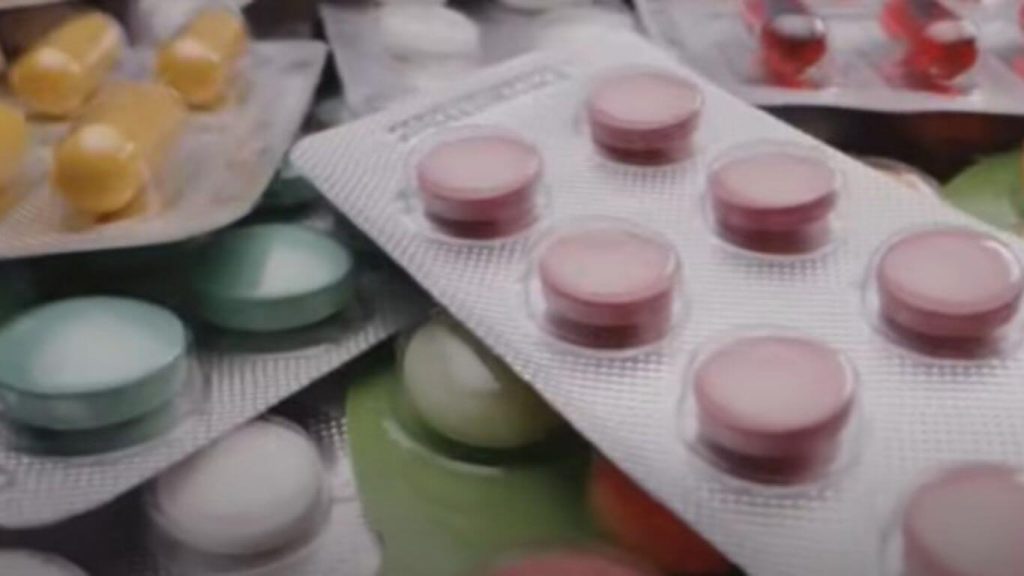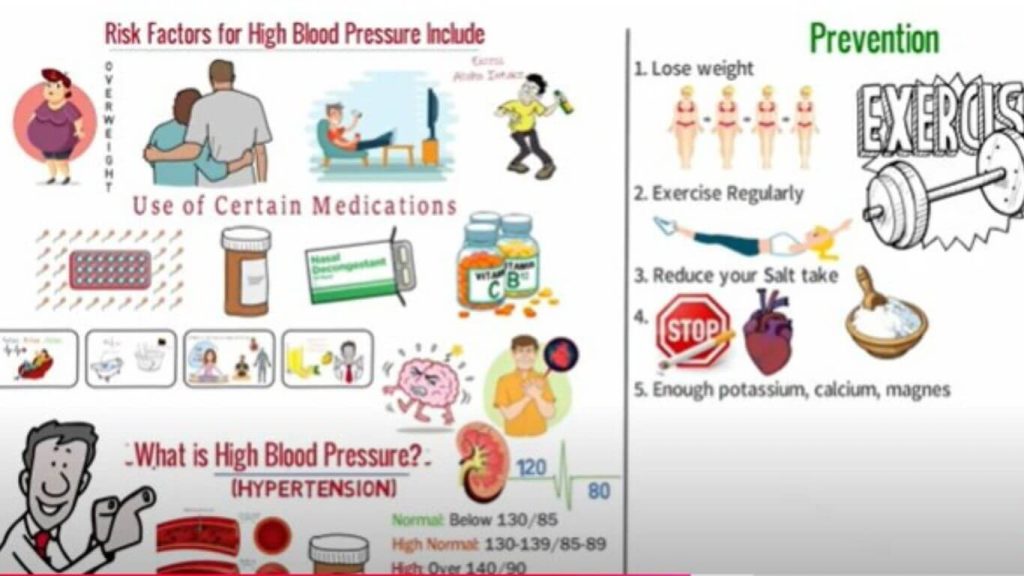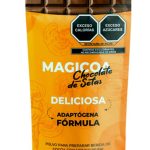As an Amazon Associate ,I earn from qualifying purchase .
High blood pressure, or hypertension, is often called the “silent killer” because it can progress without visible symptoms, leading to severe health complications. Addressing this condition naturally at home is essential for maintaining long-term health and avoiding dependence on medication when possible. This guide provides practical, scientifically-backed tips to help you manage hypertension effectively.

Understanding Blood Pressure: Low vs. High Pressure
Blood pressure measures the force of blood pushing against the walls of your arteries. It’s expressed in two numbers:
- Systolic pressure (higher number): The pressure when the heart beats.
- Diastolic pressure (lower number): The pressure when the heart rests between beats.
High blood pressure is generally considered to be 140/90 mm Hg or higher, while low blood pressure is below 90/60 mm Hg.
- Difference between low pressure and high pressure:
- High pressure stresses your heart and arteries, increasing the risk of heart disease and stroke.
- Low pressure can lead to dizziness, fainting, and shock in severe cases.
How to Reduce High Blood Pressure at Home Immediately
If you’re experiencing high blood pressure, you can take immediate steps to reduce it naturally. Here’s what you need to know:
How Can I Get My Blood Pressure Down Right Now?
The following methods can help lower your blood pressure instantly in a crisis:
- Practice Deep Breathing:
- Sit in a comfortable position and take slow, deep breaths. Inhale for 4 seconds, hold for 4 seconds, and exhale for 6 seconds.
- Deep breathing reduces stress hormones and relaxes blood vessels, effectively lowering blood pressure.
- Use the 4-7-8 Breathing Technique:
- Inhale through your nose for 4 seconds, hold your breath for 7 seconds, and exhale slowly for 8 seconds.
- This method calms the nervous system and quickly brings your blood pressure down.
- Drink a Glass of Water:
- Dehydration can raise blood pressure. Rehydrating helps your body normalize.
- Try a Cold Compress:
- Placing a cold compress on the back of your neck can reduce blood pressure by constricting blood vessels temporarily.

What Brings Blood Pressure Down the Fastest?
Lifestyle hacks to quickly lower blood pressure include:
- Eating Foods Rich in Potassium and Magnesium:
- Potassium regulates sodium levels, while magnesium relaxes blood vessels. Bananas, avocados, and spinach are excellent choices.
- Engaging in Light Exercise:
- A 10–15 minute walk can dilate your blood vessels and reduce pressure.
- Avoid high-intensity exercises during a spike in blood pressure.
- Using Stress-Relief Techniques:
- Meditation, listening to calming music, or aromatherapy can reduce stress and lower blood pressure.
- Avoiding Caffeine and Salt:
- Caffeine and sodium contribute to hypertension. Opt for herbal teas like chamomile or hibiscus instead.
What Body Position Is Best for High Blood Pressure?
Certain positions can reduce blood pressure immediately:
- Supine Position (Lying on Your Back):
- Lie flat on your back with your arms relaxed at your sides. This position promotes circulation and reduces strain on your heart.
- Legs Elevated:
- Lie on your back and elevate your legs above heart level using a pillow. This reduces pressure on your heart and encourages better blood flow.
- Sitting with Proper Posture:
- Sit with your back straight, feet flat on the floor, and hands resting on your knees. Avoid crossing your legs, as this can temporarily increase blood pressure.

Long-Term Natural Remedies for High Blood Pressure
To manage high blood pressure sustainably, incorporate these strategies:
Maintain a Healthy Diet
- Adopt the DASH Diet (Dietary Approaches to Stop Hypertension):
- Emphasizes fruits, vegetables, whole grains, lean protein, and low-fat dairy.
- Limits red meat, salt, and sugar.
- Consume Garlic and Beetroot:
- Garlic contains allicin, which helps lower blood pressure.
- Beetroot is rich in nitrates that relax blood vessels.
Exercise Regularly
- Engage in moderate aerobic exercises like brisk walking, swimming, or cycling for 30 minutes daily.
- Incorporate strength training twice a week to enhance heart health.
Stay Hydrated
- Drink 8–10 glasses of water daily. Proper hydration improves blood viscosity and reduces the workload on your heart.
Manage Stress
- Chronic stress elevates blood pressure.
- Practice Mindfulness Meditation: Spend 10 minutes focusing on your breath and observing your thoughts.
- Progressive Muscle Relaxation: Tense and relax each muscle group systematically to relieve tension.
Maintain a Healthy Weight
- Excess weight increases resistance in blood vessels, making it harder for your heart to pump blood.
- Losing even 5–10% of your body weight can significantly reduce blood pressure.
Lifestyle Changes for Better Blood Pressure Control
Long-term control of high blood pressure involves consistent lifestyle adjustments.
Limit Alcohol and Quit Smoking
- Alcohol increases blood pressure over time, and smoking damages blood vessels. Moderation is key.
Get Quality Sleep
- Poor sleep elevates stress hormones, leading to hypertension. Aim for 7–8 hours of uninterrupted sleep each night.
Monitor Blood Pressure Regularly
- Use a home blood pressure monitor to track your progress. Document readings to share with your doctor.

Low Pressure Vs. High Pressure: The Balance Matters
Maintaining balanced blood pressure is critical for overall health.
- Low Pressure Risks: May lead to dizziness, fainting, or shock. Common in conditions like dehydration or certain medications.
- High Pressure Risks: Can cause heart attack, stroke, kidney failure, and vision loss if unmanaged.
Balancing blood pressure involves addressing both ends of the spectrum by adopting healthy habits and avoiding extremes.
When to Seek Medical Attention
While natural remedies can be effective, certain situations require immediate medical help:
- Blood pressure readings consistently above 180/120 mm Hg.
- Symptoms like chest pain, shortness of breath, or visual disturbances.
Understanding Hypertension
Before diving into specific foods, it’s essential to understand what hypertension is. Blood pressure measures the force of blood pushing against the walls of the arteries. It is expressed in two numbers: systolic (the upper number) and diastolic (the lower number). A normal blood pressure reading is typically around 120/80 mmHg. When readings consistently rise above 140/90 mmHg, it is classified as hypertension.
Risk factors for high blood pressure include:
- Poor dietary habits.
- Sedentary lifestyle.
- Excessive salt and alcohol consumption.
- Obesity.
- Genetic predisposition.
Managing high blood pressure often involves lifestyle changes, particularly in dietary habits. Incorporating specific foods into your diet can significantly help regulate and reduce blood pressure.

What is the Best Food to Reduce High Blood Pressure?
While there is no single “magic” food to cure hypertension, several nutrient-rich foods can work synergistically to lower blood pressure. Below are some of the best dietary choices supported by scientific research.
1. Leafy Greens
Leafy greens like spinach, kale, collard greens, and arugula are rich in potassium, which helps balance sodium levels in the body. High sodium levels are a common cause of high blood pressure, and potassium aids in flushing out excess sodium through urine.
Why Leafy Greens Help:
- Potassium reduces tension in blood vessel walls, improving blood flow.
- They are low in calories and support weight management, a critical factor in hypertension control.
How to Incorporate:
- Add them to salads, smoothies, or soups.
- Steam or sauté them with garlic for a healthy side dish.
2. Berries
Berries, particularly blueberries, strawberries, and raspberries, are rich in flavonoids. These natural compounds have been shown to improve blood vessel function and reduce blood pressure levels.
Key Benefits:
- Flavonoids improve nitric oxide production, which relaxes blood vessels.
- Their antioxidants reduce oxidative stress, a factor in hypertension.
Tips for Consumption:
- Add berries to your morning oatmeal or yogurt.
- Snack on them fresh or blend them into smoothies.
3. Beets
Beets are an excellent source of dietary nitrates, which the body converts into nitric oxide. Nitric oxide relaxes blood vessels, lowering blood pressure and improving circulation.
Research Insights:
- Studies have shown that drinking beet juice can significantly lower blood pressure within hours.
Ways to Enjoy:
- Drink freshly pressed beet juice.
- Roast or steam beets and add them to salads.

4. Oats
Oats are a high-fiber food that contains beta-glucan, a type of soluble fiber that reduces cholesterol and improves heart health. They are particularly effective at lowering systolic and diastolic blood pressure.
How Oats Work:
- Beta-glucan helps reduce arterial stiffness.
- Oats stabilize blood sugar levels, which can indirectly influence blood pressure.
Serving Suggestions:
- Start your day with a bowl of oatmeal.
- Use oats as a base for homemade granola or energy bars.
5. Bananas
Bananas are another potassium-rich food that helps maintain optimal sodium-potassium balance in the body. They are easy to incorporate into any diet.
Potassium’s Role:
- Reduces strain on the heart and blood vessels.
- Aids in maintaining healthy kidney function, crucial for blood pressure regulation.
Quick Ideas:
- Add bananas to your smoothies or cereals.
- Eat them as a quick snack.
6. Fatty Fish
Fatty fish like salmon, mackerel, and trout are rich in omega-3 fatty acids, which have anti-inflammatory properties and help lower blood pressure by reducing blood vessel inflammation.
Omega-3 Benefits:
- Decrease triglyceride levels.
- Promote vasodilation, which reduces blood pressure.
Cooking Tips:
- Grill or bake salmon with herbs and olive oil.
- Include fish in your diet at least twice a week.
7. Garlic
Garlic contains allicin, a compound known for its heart-healthy benefits. It helps relax and dilate blood vessels, improving blood flow and reducing blood pressure.
Why Garlic Works:
- Enhances nitric oxide production.
- Reduces oxidative stress.
Usage Ideas:
- Use fresh garlic in cooking.
- Consider garlic supplements after consulting a healthcare provider.

8. Nuts and Seeds
Nuts like almonds, walnuts, and pistachios, as well as seeds like flaxseeds and chia seeds, are rich in magnesium, potassium, and healthy fats.
Nutritional Highlights:
- Magnesium relaxes blood vessels.
- Omega-3s in seeds reduce inflammation.
Serving Tips:
- Add nuts and seeds to salads, yogurts, or smoothies.
- Snack on a handful of unsalted nuts.
9. Low-Fat Dairy
Low-fat dairy products like milk, yogurt, and cheese are excellent sources of calcium and protein, both of which are essential for maintaining healthy blood pressure levels.
Calcium’s Role:
- Helps blood vessels contract and relax efficiently.
- Reduces the risk of hypertension over time.
Incorporate Dairy:
- Choose unsweetened yogurt as a snack.
- Add milk to your morning tea or coffee.
10. Dark Chocolate
Yes, chocolate can be healthy! Dark chocolate with at least 70% cocoa content is rich in flavonoids, which improve heart health and lower blood pressure.
Flavonoid Benefits:
- Improve endothelial function.
- Support nitric oxide production.
How to Enjoy:
- Have a small square of dark chocolate as a treat.
- Use it in healthy desserts or smoothies.
The DASH Diet: A Proven Approach
The Dietary Approaches to Stop Hypertension (DASH) diet is a research-backed eating plan specifically designed to combat high blood pressure. It emphasizes:
- Fruits and vegetables.
- Whole grains.
- Lean proteins.
- Low sodium intake.
Key Elements of the DASH Diet:
- Limit salt to less than 2,300 mg per day.
- Prioritize potassium, magnesium, and calcium-rich foods.
- Avoid processed and sugary foods.
Lifestyle Changes to Complement Diet
While eating the right foods is crucial, other lifestyle changes can enhance blood pressure management:
- Exercise regularly: Aim for at least 30 minutes of moderate exercise daily.
- Manage stress: Practice yoga, meditation, or deep breathing exercises.
- Limit alcohol and caffeine: Excessive consumption can spike blood pressure.
- Maintain a healthy weight: Obesity is a significant risk factor for hypertension.

Final Thoughts
Managing high blood pressure naturally at home is achievable through a combination of immediate interventions and long-term lifestyle changes. Understanding your body, addressing stress, maintaining a healthy diet, and staying active can significantly improve your heart health.
By following these strategies, you can take control of your blood pressure and prevent complications. Remember, consistent effort and monitoring are key to success in managing hypertension.







